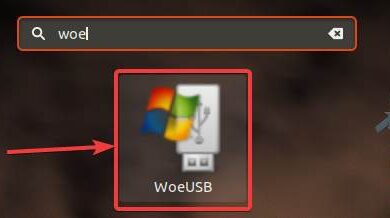FBI Warns Chrome Users Security Risks You Need to Know in 2025

In 2025, online security is more important than ever. With billions of people browsing the internet daily, cybercriminals are constantly looking for new ways to exploit vulnerabilities. Recently, the fbi warns chrome has issued a warning to Google Chrome users, highlighting serious security threats. This announcement has caused widespread concern, especially because Chrome is the most popular web browser globally, with over 3 billion users.
But what exactly did the fbi warns chrome warn about? Why is Chrome under scrutiny? And how can you protect yourself?
In this in-depth article, we will cover everything you need to know about the FBI’s warning to Chrome users, how cyber threats are evolving in 2025, and practical steps you can take to stay safe online.
Why Did the FBI Warn Chrome Users in 2025?
The Federal Bureau of Investigation (FBI) issued a public advisory in mid-2025 concerning a surge in Chrome-based cyberattacks. According to their statement, attackers are leveraging browser vulnerabilities, malicious extensions, and fake Chrome updates to compromise user devices.
Here are the key reasons behind the warning:
Zero-Day Vulnerabilities in Chrome
A zero-day vulnerability is a flaw in software that hackers exploit before developers have a chance to fix it. In 2025, Chrome has faced multiple zero-day attacks, some of which were identified by the FBI’s cyber division.
Hackers are using these vulnerabilities to:
- Install malware remotely
- Steal personal data and passwords
- Gain unauthorized access to webcams and microphones
- Hijack banking sessions
These threats are especially dangerous because they often go undetected until significant damage is done.
Malicious Chrome Extensions
Another major concern is the rise of malicious Chrome extensions. Many users install browser add-ons to block ads, take screenshots, or boost productivity. However, cybercriminals have created fake extensions disguised as legitimate tools.
Once installed, these fake extensions can:
- Track every website you visit
- Record your keystrokes
- Steal login credentials
- Inject malicious ads into web pages
- Redirect you to phishing websites
The FBI reported that in early 2025, over 25 million Chrome users unknowingly installed harmful extensions, compromising their online security.
Fake Chrome Update Scams
One of the most deceptive tactics cybercriminals use is the fake Chrome update scam. These scams trick users into thinking their browser is outdated. A popup appears saying, “Your Chrome is out of date—click here to update.”
Once the user clicks the fake link, malware is downloaded instead of an actual update.
This type of scam has become increasingly sophisticated in 2025, using:
- Authentic-looking Google branding
- Pop-ups that bypass ad blockers
- Fake support phone numbers
- Ransomware payloads
The FBI’s warning specifically highlights this method because it’s targeting both individuals and businesses on a global scale.
FBI Chrome Warning: Who Is at Risk?
While it might seem like only tech novices fall for these tricks, the FBI reports show that everyone is at risk, including:
- Students
- Remote workers
- Corporate employees
- Small business owners
- Government agencies
In fact, cyberattacks on Chrome are affecting both personal and corporate environments. Hackers are no longer just targeting random individuals—they’re now focusing on high-value targets and large-scale data theft.
How Do Chrome Attacks Work?
Understanding how these attacks happen can help you better protect yourself. Let’s break down some of the most common methods cybercriminals are using in 2025.
A. Exploiting Browser Vulnerabilities
Chrome is a complex browser with millions of lines of code. No software is perfect, and bugs occasionally slip through. Hackers search for these weak points, especially those that haven’t been patched yet.
Once a vulnerability is found, attackers can:
- Inject malicious code into websites
- Use malware to take control of the browser
- Access saved passwords and autofill data
- Install spyware silently
B. Creating Fake Chrome Extensions
Cybercriminals develop fake extensions that look identical to popular tools. Once users download them, these extensions request dangerous permissions such as:
- Reading and changing all data on visited websites
- Accessing browser tabs and history
- Managing downloads and clipboard data
After permissions are granted, the extension operates like spyware.
C. Phishing Through Chrome Pop-Ups
Hackers use realistic pop-ups that mimic Chrome’s design. These pop-ups prompt users to:
- Download a “critical update”
- Call a fake customer support line
- Enter personal information
Once you interact with these pop-ups, malware installation begins, or your private information is stolen.
D. Browser Hijacking
In browser hijacking attacks, Chrome’s settings are changed without the user’s consent. This can include:
- Redirecting search results to malicious websites
- Replacing the homepage with scam sites
- Forcing unwanted toolbars onto the browser
These attacks are not just annoying—they can lead to identity theft, data breaches, and financial loss.




